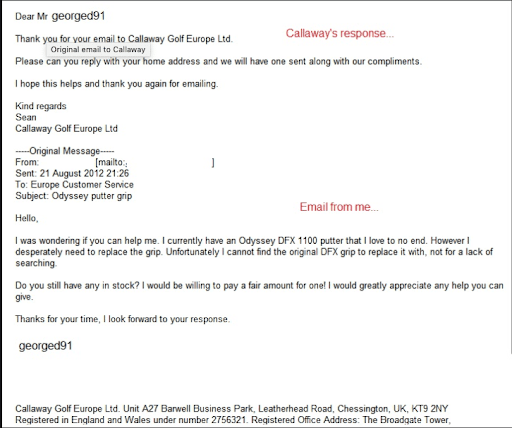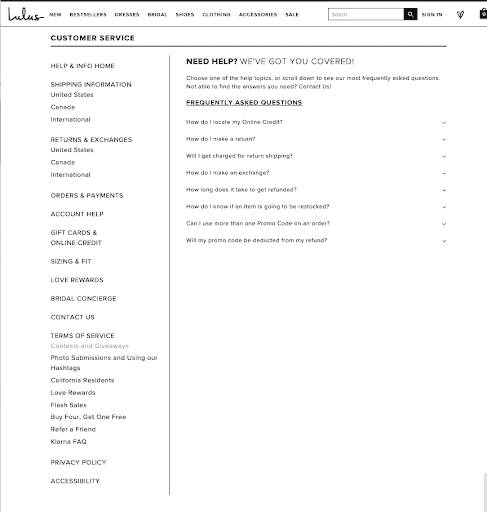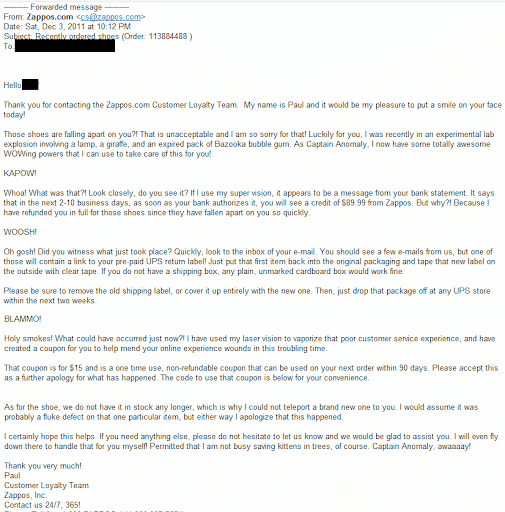Article
Customer Service Emails: Why You Send Them and How to Improve Them
September 5, 2019

If you’re not sitting through each step of the consumer journey and identifying where you can best serve your customers, you’re risking the chance of losing them to the competition. When identifying the current state of your customer service, email is an excellent place to start. The interactions from your customer service emails could be a make or break for whether a customer continues to shop with you.
The great thing about email communication is that each interaction is customizable and has the opportunity to be improved in each interaction. In order to improve your customer service emails, you’ll need to identify why people receive them in the first place and how you’re currently responding.
Customer Service Emails: Why and How
The specifics of your customer service email inquiries depend on your product and your customer. However, there are four major buckets that the majority of customer service emails fall into:
- New user with questions about the product
- Neutral customer who desires a refund
- Loyal customer who is noticing issues with a product
- Angry customer who is outraged and demands change
You’ll use market segmentation to target different audiences, but those that reach out for help will not follow the same groups. The goal of your company should be to provide a product or service and enough information on its uses in order to receive the minimal amount of help requests as possible. In reality, that change isn’t going to happen overnight, but your email response can.
Before improving your email customer service, your team will need to sit down and analyze what your customer journey is like right now. When someone emails your customer service group, will they get a confirmation that their message was received? Will they receive a message at all?
Have your employees identify customer service emails they’ve received from other brands. See where your emails differ from some brands that are known for their customer service. What areas are you disappointing your clients and where do you have space to improve.
Identifying the Crucial Components of Customer Service Emails
Each brand can compose a customer service email in whatever way aligns with your brand’s image. A CRM tool can help simplify the process of managing customer relationships. However, there’s a few important components of customer service emails that ring true across the board no matter what industry your organization falls into.
Use Their Name
When responding to a customer service email, the first thing you should do is to greet the customer. A simple “Hi, Priya” or “Good Afternoon, Zachary” gives them the feeling that you paid enough attention to their message to remember their name. This small touch shows that your company cares.
Take a look at Callaway’s response to a customer who was seeking to regrip their golf clubs. They greeted the customer by name and then thanked them for writing in. The company then went above and beyond, and offered a free replacement. Your brand doesn’t need to shoot for the stars, especially if you aren’t able to financially able to support it, but the personal touch in this email goes a long way.

Acknowledge Their Concerns and Apologize
After you’ve greeted a customer, use the next part of their email to reiterate their concerns. This repetition can ensure that there is not anything lost in translation. Additionally, make sure that you’re responding to all parts of the message. You don’t want to cause more work for the customer by requiring them to repeat something they’ve already brought up to you.
Make sure to apologize on behalf of the organization — even if you believe that the customer is blatantly wrong. By agreeing with their complaint, you’ll sympathize with the reader and they’ll be more likely to listen and trust you for the rest of their communication with you.
Affirm That You’re Taking Action and Check in Appropriately
One of the worst things besides ignoring a customer’s complaint is to forget to acknowledge that you’ll be taking action. You don’t want to leave someone in the dark when you’re trying to resolve their issue.
It’s impractical that you can give a guaranteed date that you’ll receive an answer. However, you can give the customer a date that you’ll check in by with an update. Once they reach out to you, you want to make their life easier in order to ease their process.
Making The Job Simpler
Build Out a Robust FAQ Section
Customer service starts with any interaction that someone may have with your brand. It’s important that you provide relevant product information on your website. The more information, the fewer complaints or questions you’ll receive and the more positive customer experience you’ll provide.
Lulus provides customers with answers so they don’t have to reach out via email to ask simple questions. The online clothing retailer covers shipping information, returns, sizing, and more. By having this section, Lulus takes a load off of their customer service team and enhances the customer experience.

Create Templates
When appropriate, using canned responses is a great way to ensure consistency across your customer service’ emails. If you receive the same questions over and over about a product, have a common response that you use to respond to these inquiries. Templates should not equal full-fledged email, however.
Zappos is well-known for going above and beyond for customers. In the email below, the customer service representative used a fun and creative approach to providing the customer with a refund, return label, and explanation for why the team could not simply replace the pair of shoes. The level of detail that went into this email is clearly a result of creating a customer service email template. Using templates can be simple or something as detailed as this. Find what works best for your brand.

Keep It Human
Your customer service emails should assure the reader that there’s a human on the other end. In order to get clients to treat you with respect and to keep responses candid, you’ll need to make sure that you keep your responses human as well. Add emojis when necessary. Sign emails off with your name instead of “customer service team.” Consider adding a photo to the end of your email signature. As with anything else, decide what works best for your brand.
Anastasia Masters is a Content Marketing Associate at G2.com.
The State of Brand Loyalty in the U.S. in 2023
Related



